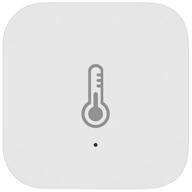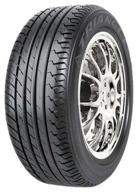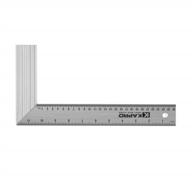
Review on 📟 Cornet ED88T Plus: Advanced Tri-Mode Meter with EMF/RF Detector, Acoustic & Low Frequency Gaussmeter, Electric Field Meter, Sound Signature & Datalogger by Isaac Cahill

Fairly accurate HF, not very good magnetic.
I have access to various types of equipment that I used to test this gauge. Cornet's ED88Tplus accurately reads RF (radio frequency) power from 1.5GHz to 2.5GHz and slightly low readings outside of that frequency range. It reads 90% lower at the lower 300MHz and 90% lower at 5GHz. This is actually reasonable performance for an inexpensive meter and is sufficient to detect most commonly encountered HF frequencies, with the exception of TV stations below channel 14 and FM and AM radio, which are below 300MHz. 5G devices (up to 25 GHz) that have not yet been implemented cannot be measured either. When placed in a cage shielded from all radio frequencies, the 88Tplus correctly reads less than 0.001 mW/m² and is accurate at frequencies around 2 GHz when the RF level is above zero. There is an RF peak detection feature that shows the height of fast RF pulses (usually from cell towers, wireless devices, etc.). However, there is a problem with implementing this peak detection - the main number displayed shows the height of each pulse for 1/2 second before reverting to the actual RF field strength (lower number), and the pulse height is also "permanent". fixed" . " shows a subnumber under the main number. When the digital information pulses are faster than 2 pulses per second (which is typical of cell towers and routers), both the major and minor numbers will show a spike without being able to show the actual RF level. Even the LED row and the bar graph remain incremented to the pulse height, and there is no display of the average value, which is usually between 1/10 and 1/100 of the pulse height. There is also no indication of whether the measured HR is pulsating or constant. If you're only interested in heart rate (rather than average), this meter works well at HR. The E-field (alternating electric field) measures the E-field fairly accurately at 60 Hz (line frequency in North America). With zero E-field, the meter reads 2 V/m (volts per meter) instead of 0 V/m. This error is acceptable, since the resolution is 1 V / m (oddly enough, the instructions say that the resolution is more fight, 10 V / m.) The meter is not equally sensitive at frequencies from 50 Hz to 50 kHz, as can be seen from the instructions. Instead the meter reads 1500% more at 3000Hz and returns to correct sensitivity at 800kHz. The E-field is uniaxial, in the same direction as the meter's length measurement. A uniaxial sensor works well for the E-field because the field is created by charged particles or "monopoles" (electrons and protons). Just point the top of the meter outwards in the direction you want to measure the E-field and the reading will generally be correct. If the source of the E-field is due north of you, the direction of the field at your location is usually along a north-south line. Therefore point the E-field meter at the source (in this example north). However, measuring the magnetic field correctly is more difficult because magnetic monopoles do not exist. If the source of the magnetic field points north, the field at your location can point north-south, east-west, top-down, or even diagonally. So if you point a single-axis magnetic meter at a magnetic field source, the meter may simply read zero, even if the field is strong. To measure this field accurately, you need to point the meter in different directions until you see the maximum. It takes some time. ED88Tplus is only uniaxial magnetic. It also shows 0.6 mG (0.06 µT) in true zero field and therefore cannot be used below 0.6 mG. It also has a slow response time (1 second) and mG readings are only accurate at 55 Hz (between 50 Hz and 60 Hz). At higher frequencies it reads up to about 1000% and the 10mG overrange limit in the sensitive area is annoying. In general, the meter is good for measuring high RF frequencies, especially the peak height of pulsed signals. The electric field mode works quite well and accurately at 60 Hz. However, the magnetic field regime has many problems. The screen is easy to read in daylight and the backlight can be turned on indoors. However, the screen is small and made up of square pixels. The numbers 0, 8 and 5 belong together and are difficult to read next to each other. The manual is wrong on some specifications and doesn't explain everything about the parameters shown. In addition, it contains several grammatical errors and strange phrases. I suspect the author's primary language is not English, which leads me to question the "Made in USA" printed on the back of the counter. Full Disclosure: I am affiliated with an American company that manufactures various laboratory instruments, including electromagnetic meters.
- Highly rated by testers for support and durability
- Not as thick as other options
New products
Comments (0)
Top products in 🛠️ Scanners & Testers

Detector Bosch GMS 120 Professional

28 Review

Xiaomi iHealth Meter Thermometer White

24 Review

VIVREAL 4 In 1 Stud Finder Wall Scanner With LCD Display - Center Finding Beam Finder And Sound Warning For Wood, AC Wire, And Metal Studs (Black/Silver)

24 Review

Room temperature and humidity sensor Aqara Temperature and Humidity Sensor white

25 Review
Another interesting products

Kapro - 353 Professional Ledge-It Try & Mitre Square - For Leveling And Measuring - Features Stainless Steel Blade, Retractable Ledge, And Etched Ruler Markings - 12 Inch

23 Review

Triangle Group TR918 225/45 R18 95V summer

61 Review

Kapro 307-08-TMS Try And Mitre Layout And Marking Square With Stainless Steel Blade, 8-Inch Length

18 Review

📏 Johnson Level and Tool 400EM-S 12-Inch Heavy Duty Metal Combination Square for Professionals, with Inch/Metric Measurements, Silver - 1 Square

8 Review

